

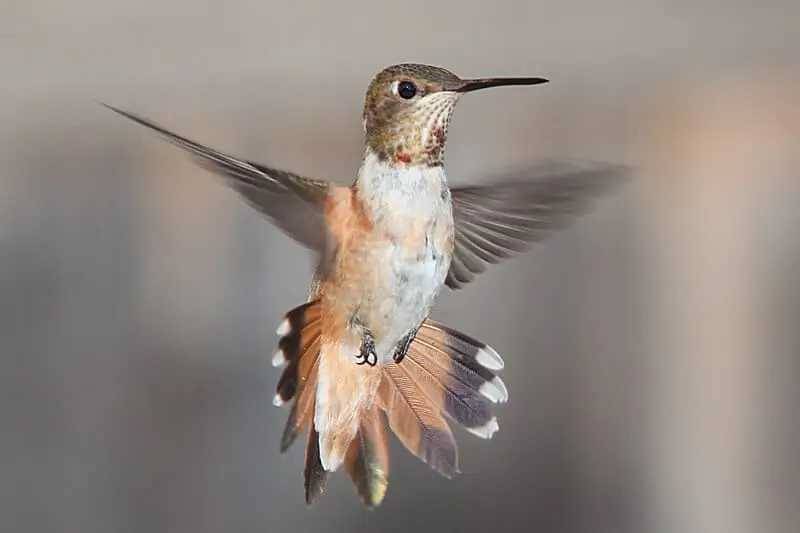
Scientific name:Selasphorus rufus
Rufous hummingbirds are known for being very “feisty” when it comes to sharing feeders and chasing off other hummers. Males are orange all over with a white patch on the upper breast and an orange-red throat. Females are green with rusty patches and a speckled throat.
In the spring they migrate up through California, spend the summer in the Pacific northwest and Canada, then zip back down through the Rockies in the fall. While the rufous is considered a hummingbird of the western U.
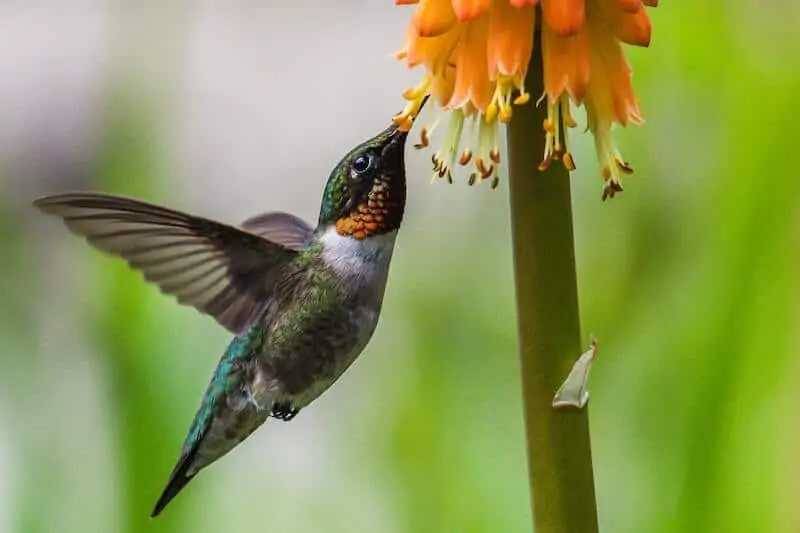
Scientific name: Archilochus colubris
Though only common in the eastern half of the United States, Ruby-throated Hummingbirds are the most abundant species of hummingbirds in the country. They are also the only breeding species of hummingbird found in the Eastern U.S.
They get their name because males have a bright ruby-red throat. Ruby-throated Hummers are emerald-green on their backs, wings, and heads with white under-parts.
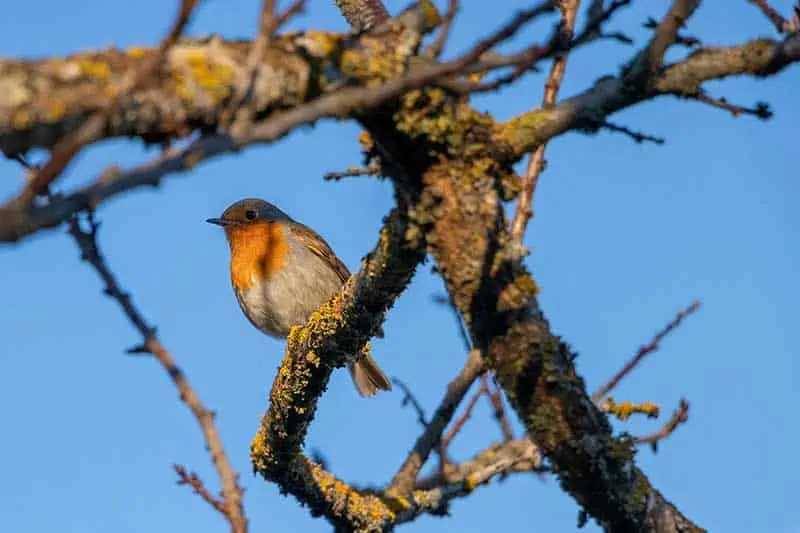
Scientific name:
The redthroat, a grayish-brown Australian bird, is most commonly observed darting between low branches and bushes or bouncing along the ground.
Only mature males have the characteristic tiny, rusty-brown neck patch that gives this species its popular name and makes distinguishing females and youngsters more difficult. The brood parasite, the , often removes the Redthroat’s eggs from its nest and lays its own similar-looking eggs.

Scientific name:
The red-bellied pitta is from the Philippine Islands, excluding the Palawan group and Indonesia, has a sharp beak, a red belly, and a green-blue stripe above it. Its native habitat is wet lowland woodland, either subtropical or tropical.
This species is 17.5 – 20cm tall and has a span of 20 – 25cm. It has short tail feathers and has a small brown head. The red-bellied pitta has been separated into 10 sub-species. Erythropitta erythrogaster is considered the dominant species.
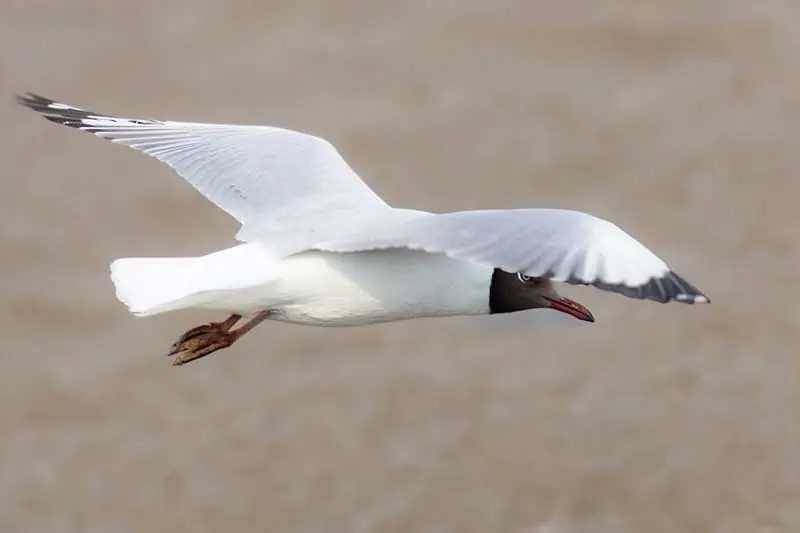
Scientific name:
This central Asian gull is about 44 to 45 centimeters in length and has a stocky, heavy body. Adults have dark ear-coverts and hind crowns, white-tipped wings, and also no white leading edge to the outer wing.
Breeding birds feature black hoods, grey-brown foreheads, and broad, white half-moon coloring below, behind, and above their eyes. Their bills are red, and their legs are orange. The gulls breed only in colonies on islands in saltwater lakes.
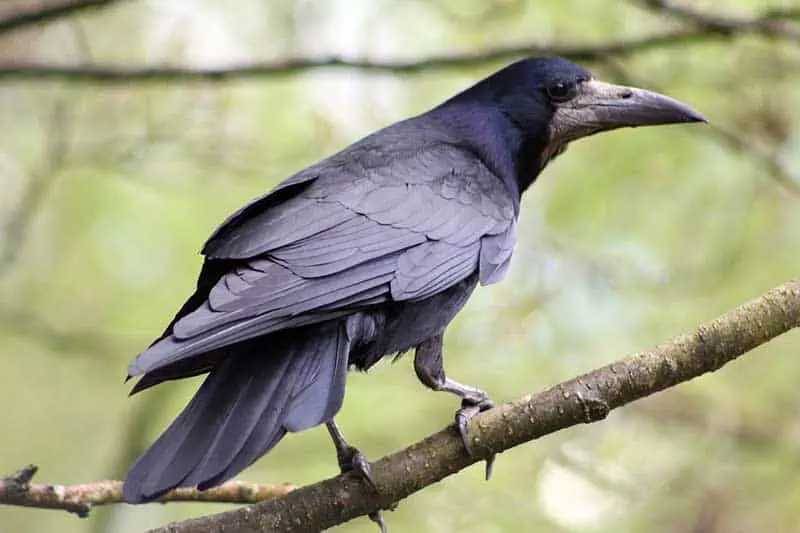
Scientific name:
The rook is a large bird from the crow family that’s found in Scandinavia and western Europe to eastern Siberia. Adults weight around 12 oz, a length from 17 to 18 in, and a wingspan of up to 40 in. It has dark feathers that frequently have a bluish-purple shine.
The feathers on its neck, head, and shoulders are thick and velvety. The feet and legs are mostly black, with a grey-black beak and a dark brown iris. Male and female rooks bond for life and remain in the flock.
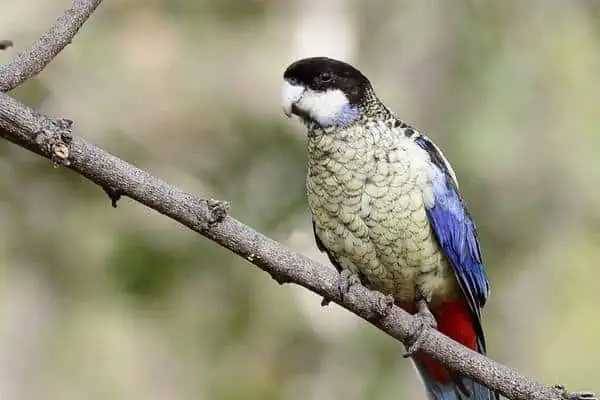
Scientific name:
These vibrantly colored Australian birds have black on the forehead, crown, and neck, with white-on-blue cheek patches. The wing and back feathers are blackish except for the yellow borders, while the belly, breast, and rump feathers are light yellow with black borders, giving the impression of a scalloped pattern, and the tail is blue-green. The bill is a light grey color. These parrots enjoy bathing in puddles of water in the wild and in captivity.
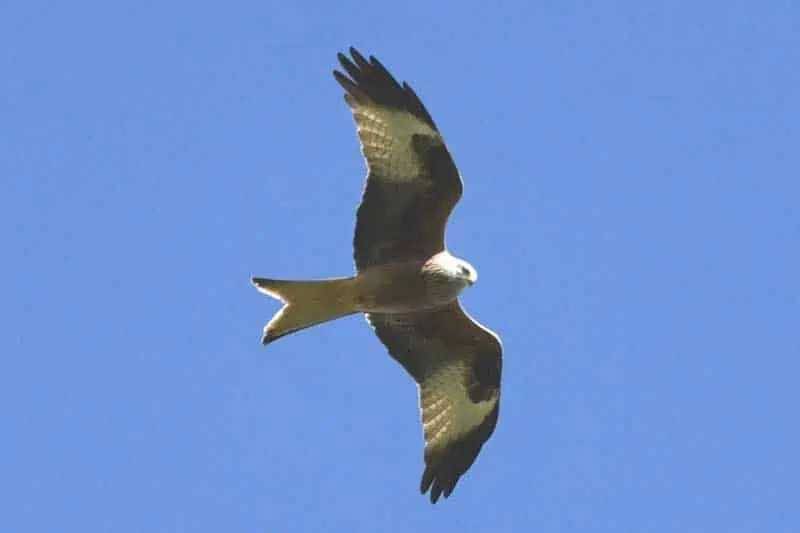
Scientific name:
Red kites live in the Western Palearctic region of Europe and northwest Africa, but have been spotted in Iran. Red kites have a wingspan of 175–179 cm and a length of 60–70 cm; males can weigh 800–1,200 g and females weigh 1,000–1,300 g.
It is a graceful bird, flying on large dihedral wings and a long forked tail. The rufous coloration extends to the torso, upper tail, and wing coverts. The white main flying feathers stand out against the black wing tips. About 1% of Red Kites in the Welsh population hatch with a lighter color than the norm.
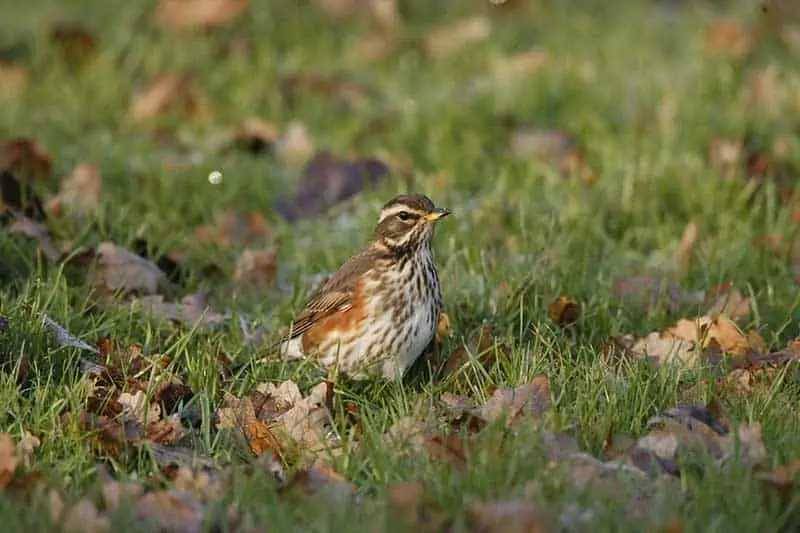
Scientific name:
Redwing live in northern regions of Europe and the Palearctic, Iceland, northern Scotland, Scandinavia, the Baltic States, northern Poland and Belarus, as well as most of Russia.
Redwings have a brown back and white underparts with dark brown markings. Their red sides and underwings are distinctive, as is the creamy white band over the eyes. Adults molt from June to September, so some begin replacing flying feathers while still nursing young. In Europe, the redwing has a population of 26-40 million individuals and a range of 10 million square kilometers.
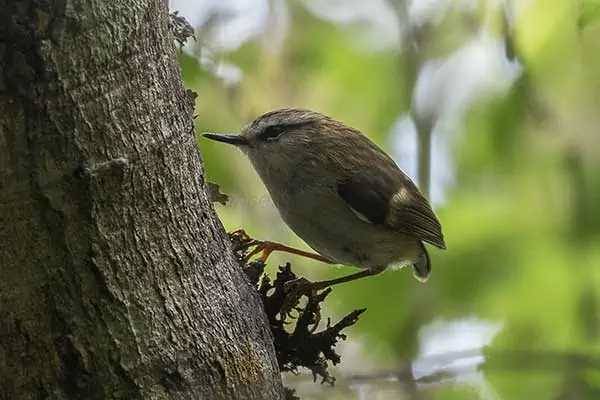
Scientific name:
The female’s beak and claws are longer than the male of this species. Male rifleman birds have a yellow-green rump. On the wing is a golden stripe across the flying feathers. The throat, belly and breast are white. The female is a darker brownish color with ochre flecks on her head and back.
They have small rounded wings, a short tail, and a long thin brownish awl-like beak for cracking. The rifleman was named after a historic New Zealand unit because its plumage resembled that of a soldier in that regiment’s military dress.
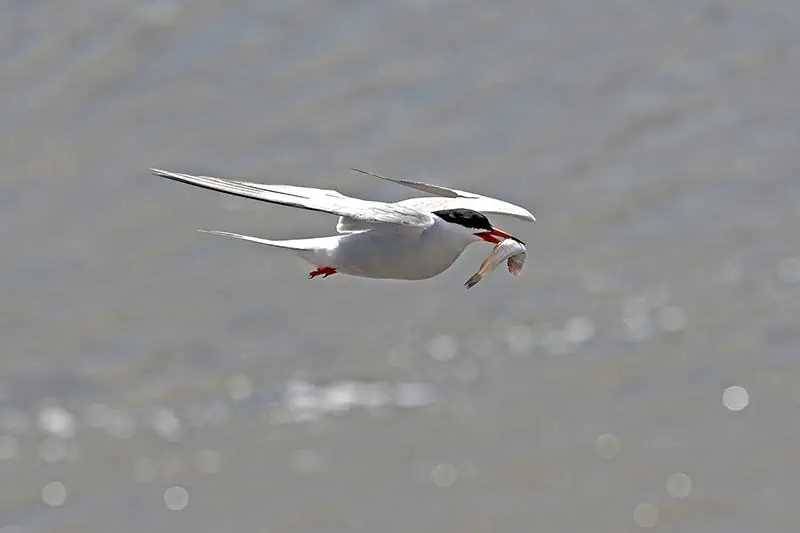
Scientific name:
This medium-sized tern has white underparts, dark grey upperparts, long pointed wings, and a forked tail featuring long flowing streamers. It is 38–43 cm in length. The beak is yellow, while the legs are bright red.
When breeding, their plumage resembles a black hat. In the winter, the crown or hat is grayish white with black flecks and streaks, a dark mask across the eye, and a dusky tip to the bill. River terns hunt for fish, crustaceans, tadpoles, and aquatic invertebrates by plunging into rivers and lakes.
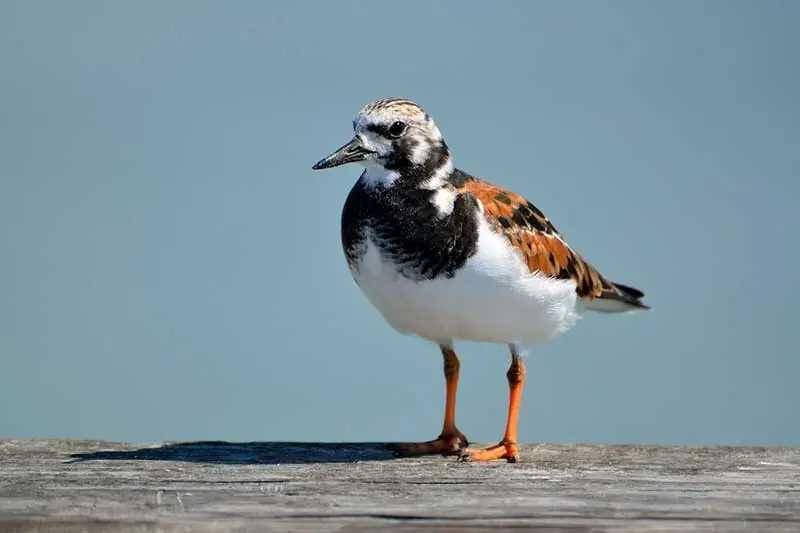
Scientific name:
This colorful bird lives along the North American coastlines and only passes through most of the U.S. on its way to its breeding grounds in the Canadian archipelago and Greenland. Some ruddy turnstone choose to live all year at the beach so if you want to spot one, head to a beach. They’re quite common at most beaches in the United States.
Both male and female breeding ruddy turnstones like the one pictured above have the chestnut colored feathers, though females are a bit paler than males. Non-breeding birds of this species lose the calico like feathers and become a much browner color.
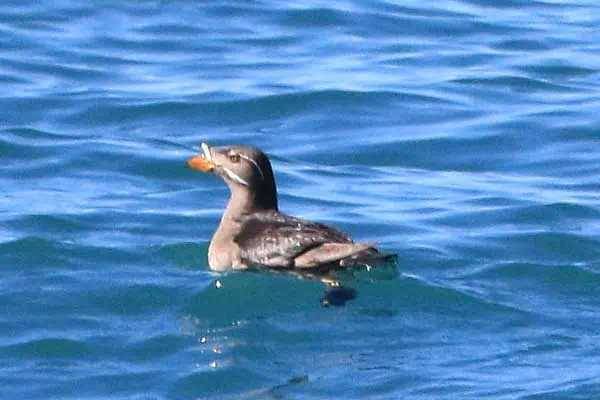
Scientific name:
Depending on the time of year, you can find rhinoceros auklets along the west coast from California to Alaska. They are common breeders in Washington and Alaska. These coastal birds feed on fish and actually nest underground in burrows that the male and female dig up to 650 feet from shore.
This species is a close relative of the puffin and get their name from the single vertical horn that protrudes from its orange bill. They were once called horn-billed puffins and unicorn puffins.

Scientific name:Eugenes fulgens
The Rivoli’s hummingbird was formerly known as the “magnificent hummingbird”. Males have a dark purple head with a brighter teal colored throat. Their body is green and brown. Often they can appear overall dark in certain light.
Females do not share this coloration and are green above and white below. They are slightly larger than most hummingbirds seen in the U.S., with a longer bill.
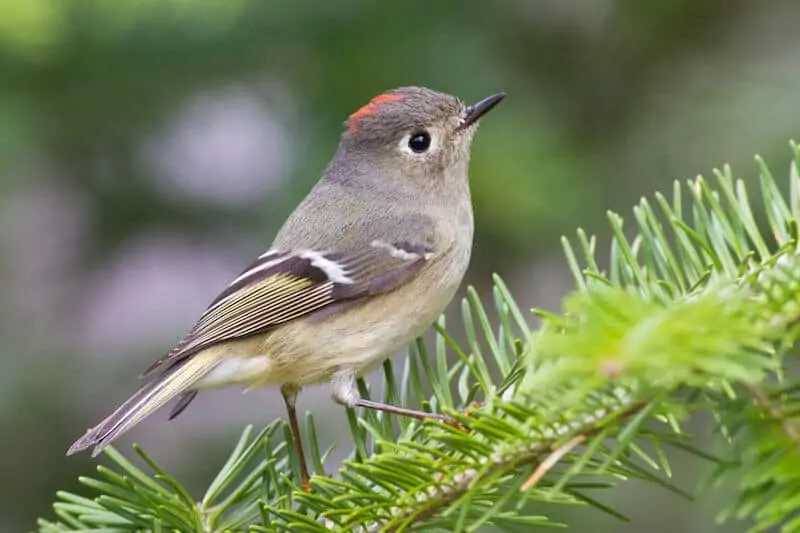
Scientific name: Regulus calendula
This tiny kinglet is an olive green with white wing bars, yellow edged wing and tail feathers and a white eye-ring. The male has a small patch of bright red feathers on top of his head that he can flash when excited, however these are usually hidden.
High energy foragers, they are often darting through shrubs and trees and flicking their wings. This constant wing-flicking can help with identification.
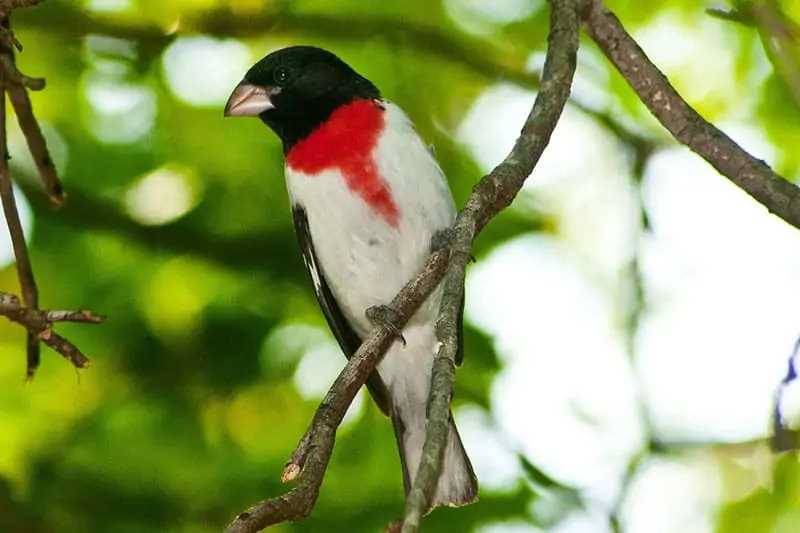
Scientific name: Pheucticus ludovicianus
Rose-breasted grosbeaks spend their winters in Central and South America, so their annual return to the U.S. is exciting for may backyard bird lovers. While females are a streaky brown and white with a bold white eyebrow, males have quite striking colors.
They have a black head and back with white wing spots, and a bright red triangle on the chest. Their fat pink beaks can help them break open tough seeds.
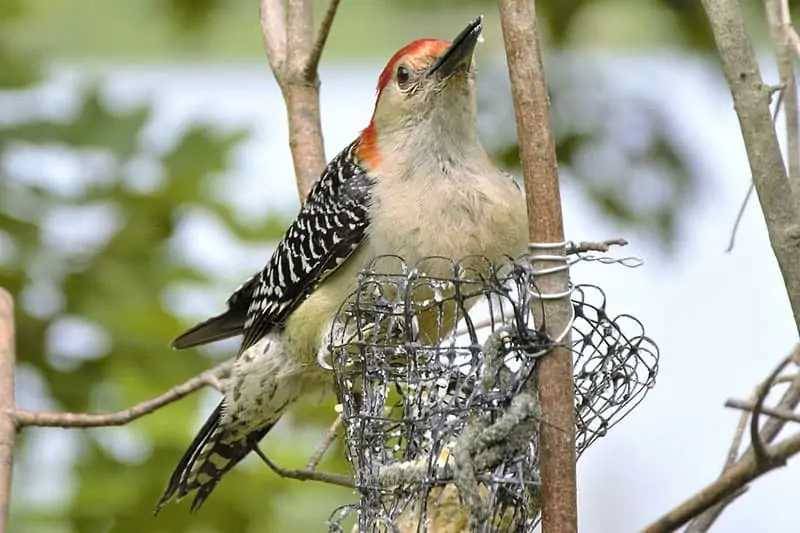
Scientific name: Melanerpes carolinus
These medium-sized woodpeckers are fairly common at feeders and backyards in the eastern U.S. Though they are described as “red-bellied” you may first notice the bright red streak along the back of their heads.
They have a plain white break with an area of pinkish red lower down in their “belly” area which is often not visible. Their wings are what really makes them easy to identify though, with the white and black barring.
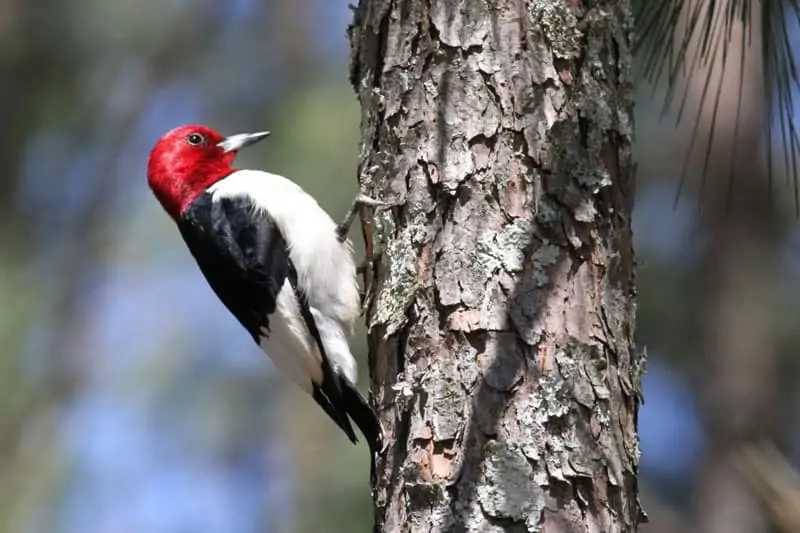
Scientific name:
Found throughout the entire state of Louisiana, the Red-headed Woodpecker is easily identified by its completely red/crimson head. They will sometimes visit , but again are less common some other types of woodpeckers. Aside from suet they will also eat various nuts and fruits, and they are also very skilled at catching insects in mid-flight.
Red-headed Woodpeckers can be quite aggressive and it’s not uncommon for them to take over nests by knocking eggs out or even puncturing them to kill the young.

Scientific name: Sitta canadensis
These little nuthatches have a dark gray back, rusty (ranges from boldly colored to pale) chest and belly, and a boldly black and white striped face. They are quick and active birds most commonly found hopping around on tree trunks and branches looking for insects beneath the bark.
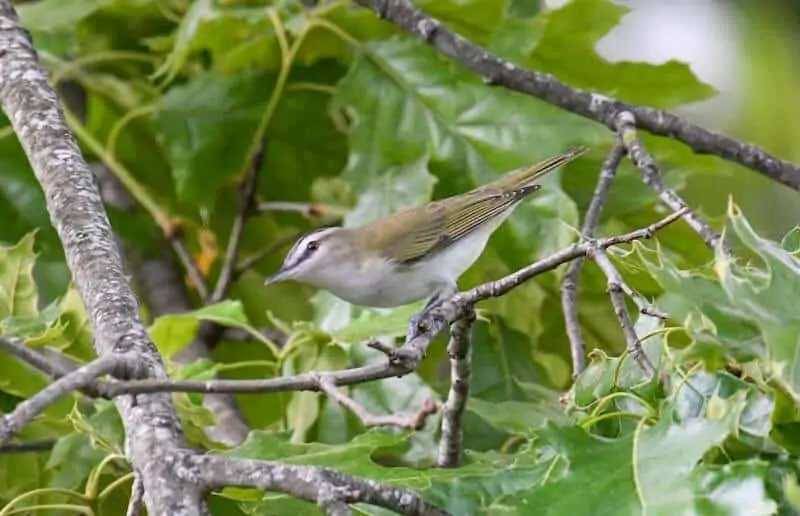
Scientific name: Vireo olivaceus
Red-eyed Vireo’s are one of the most common eastern U.S. summer birds. After spending winters in South America, they travel up to the U.S. for the breeding season. Their backs and tails are a faded olive, with a lighter breast and belly.
As their name suggests, they have a red eye-ring, although it can be hard to see and their eye appears black when in the shadows. Despite how common they are, they aren’t often seen unless you are actively looking.
Also, listen for , which once you learn to recognize you will probably start to hear everywhere in the summer since these vireos are known for “talking” all day.
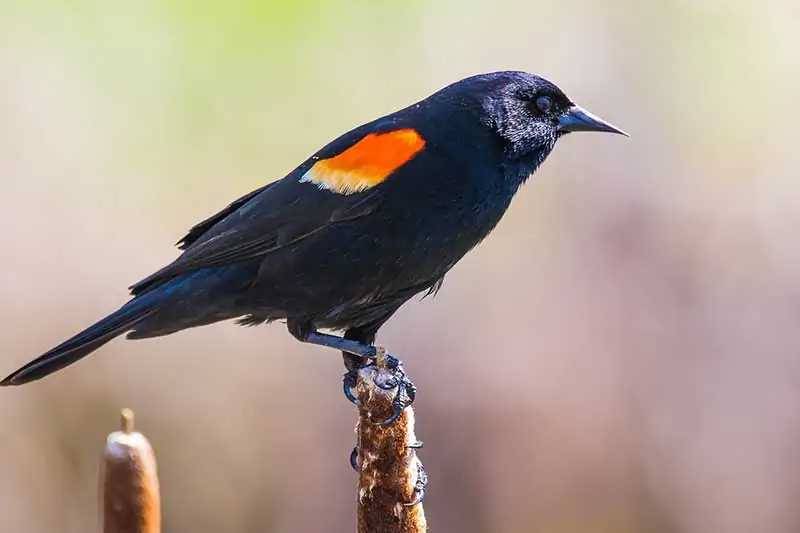
Scientific name: Agelaius phoeniceus
Among the most abundant birds in all of North America, male Red-winged Blackbirds are unmistakable because of their red and yellow “shoulders” that stand out amongst their black bodies. The females of this species however, look quite different and are mostly brown with light streaks.
They are known as a polygynous species, meaning males will have up to 15 different females that they are mating with. Unfortunately they sometimes show up at feeders in flocks and gobble up seed quickly.
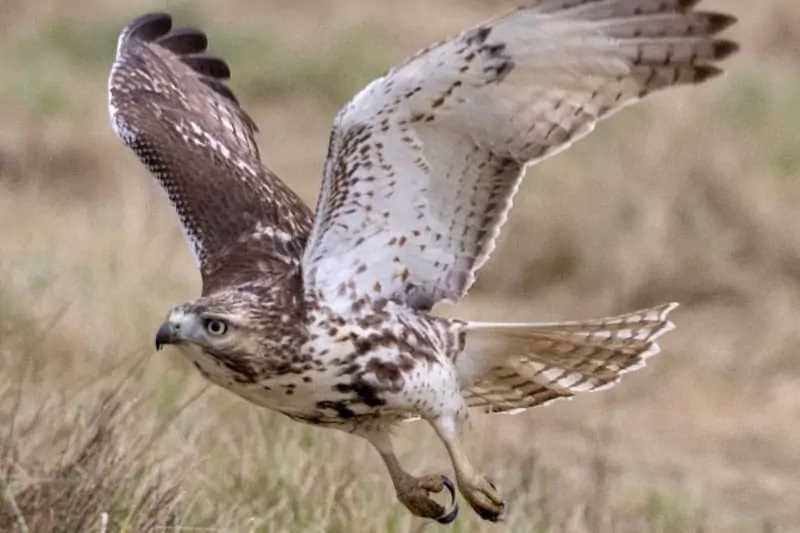
Scientific name:
Red-tailed Hawks are probably the most common hawks in the U.S. with almost 2 million nesting hawks in North America. This number accounts for about 90% of the global Red-tailed Hawk population. Red-tailed Hawks are most active during the day or early morning.
They are commonly seen soaring above looking for prey or perched along the roadside on telephone poles.
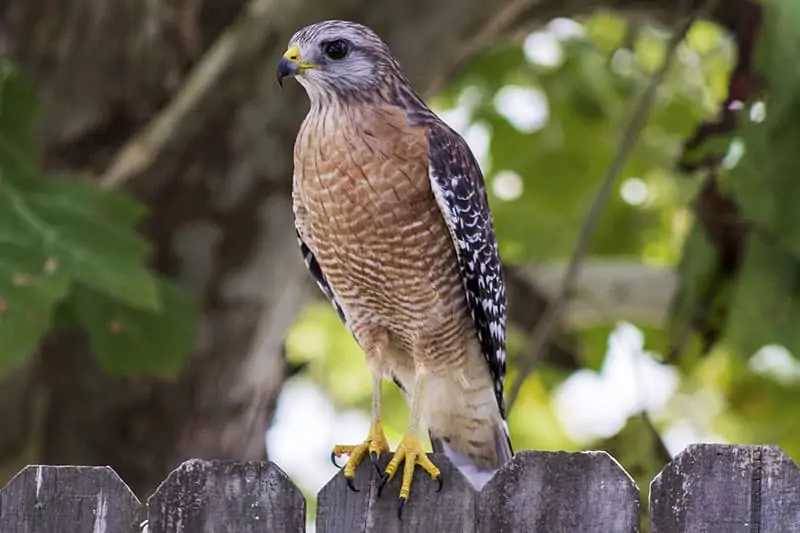
Scientific name:
The Red-shouldered Hawk can be found in much of the eastern half of the United States. They eat mostly small mammals, other birds, as well as reptiles and amphibians. The population of Red-shouldered hawks has increased over the last 50 years in their range.
Red-shouldered Hawks are known for living and nesting in wooded areas and forests. The biggest threat to this species is the clearing of wooded areas where they nest and breed.
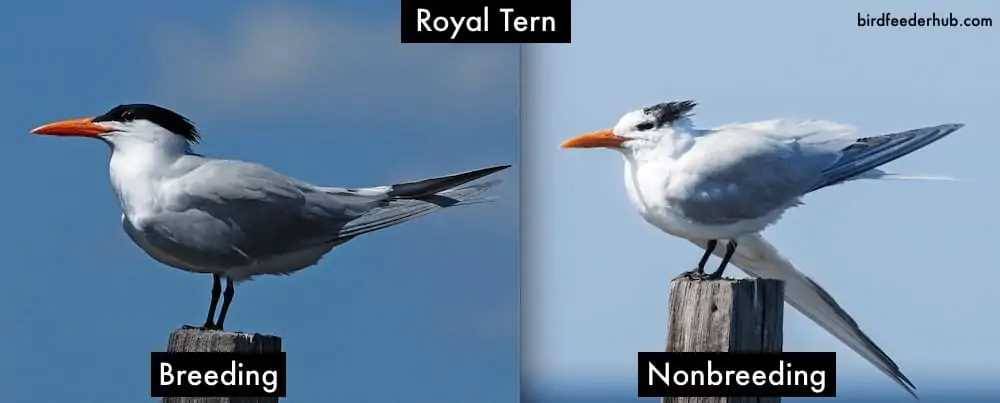
Scientific name:
Royal terns are fairly large in size. Their beak is orange without any black marking. During the breeding season the cap is black, and during the non-breeding season it is mottled.
They stick closely to saltwater habitats, so it is not very common to find them inland. However, you may catch a few around inland waterbodies during the winter.
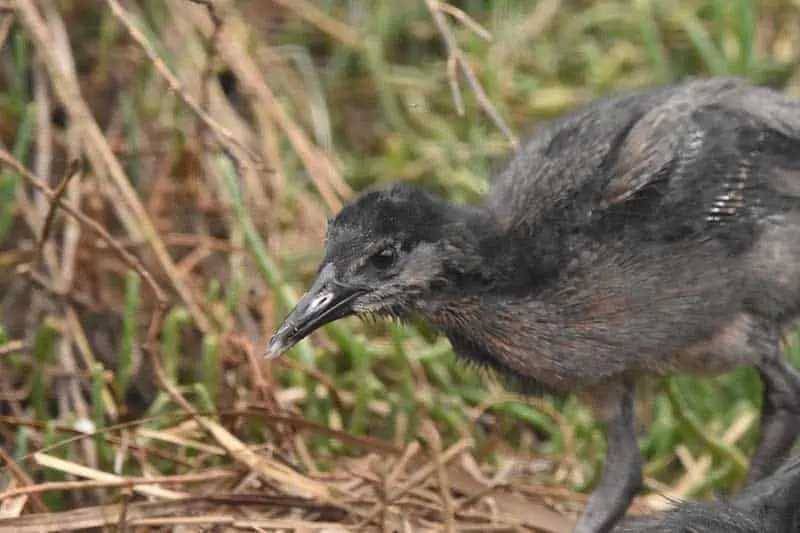
Scientific name:
This rare bird is only found in mangrove swamps of California, Arizona, Nevada, and coastal western Mexico. Ridgway’s rail are federally endangered, mostly due to habitat loss. This species has special glands that allow it to drink salt water, something most other birds are unable to do.
Ridgway’s rails are medium sized birds, a bit larger than American robins. Their bills are slightly curved downward and they have rounded wings.
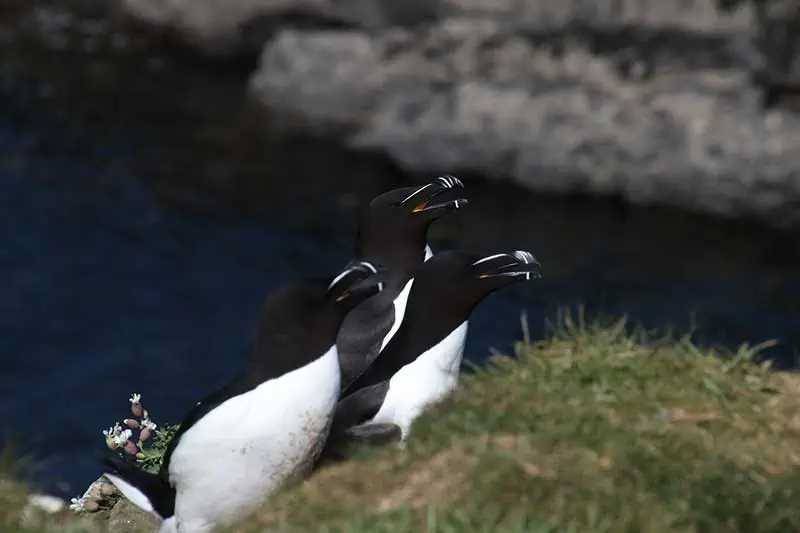
Scientific name:
Razorbills are found are found along the Gulf of Maine and parts of coastal New England in the United States, but the largest razorbill colony is actually in western Iceland.
At just 20 days old, a young razorbill must jump from the nest that’s on a cliff into the sea below. Razorbills are excellent swimmers that expertly dive into the water from above with precision.
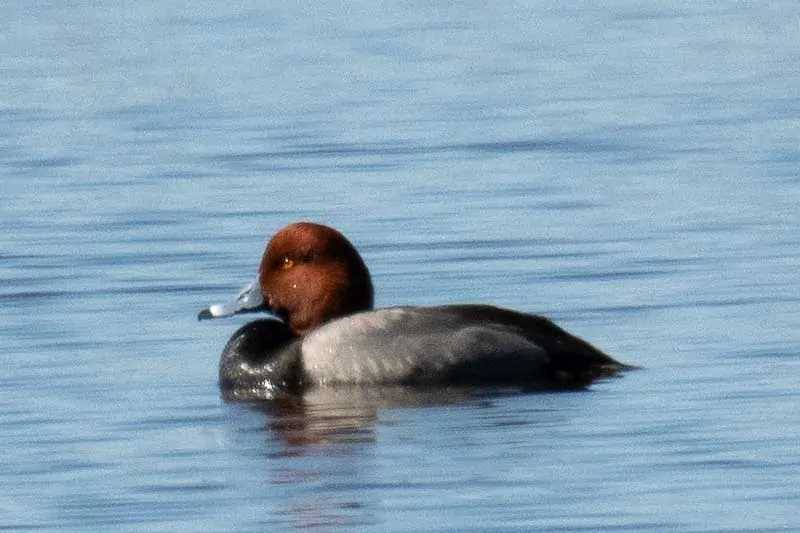
Scientific name:
Redhead ducks that can be found in every continental U.S. state, and part of Alaska. During the breeding season most fly to the northwestern United States and into Canada. The male of the species has the unmistakable cinnamon-colored head that you see in the picture above.
Redheads winter in southeastern states like Florida, Texas, and Louisiana, and also along the east coast.
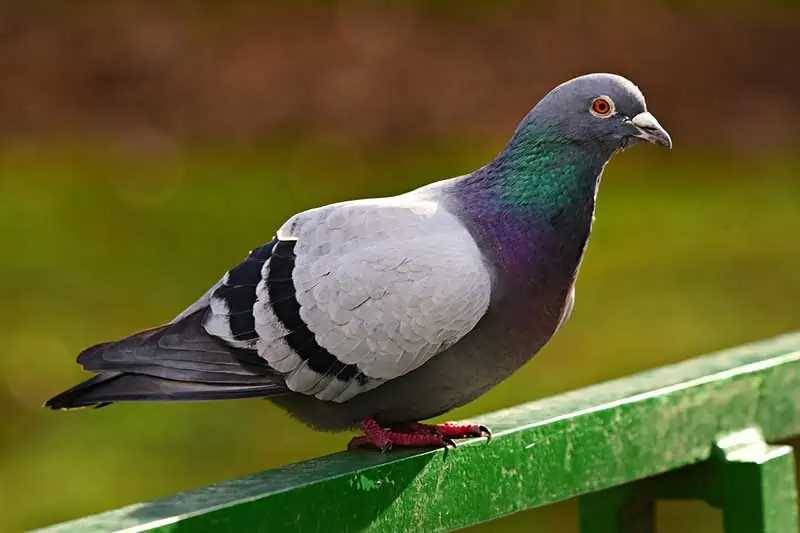
Scientific name:
The rock pigeon is one of the most widespread birds in North America and can be found from the tip of South America into Southern Canada. They are common in big cities and urban areas but will also visit backyards and peck at seeds and grains on the ground or on platform feeders.
Egyptian hieroglyphics suggest that pigeons were domesticated more than 5,000 years ago, meaning they have a long history with humans.
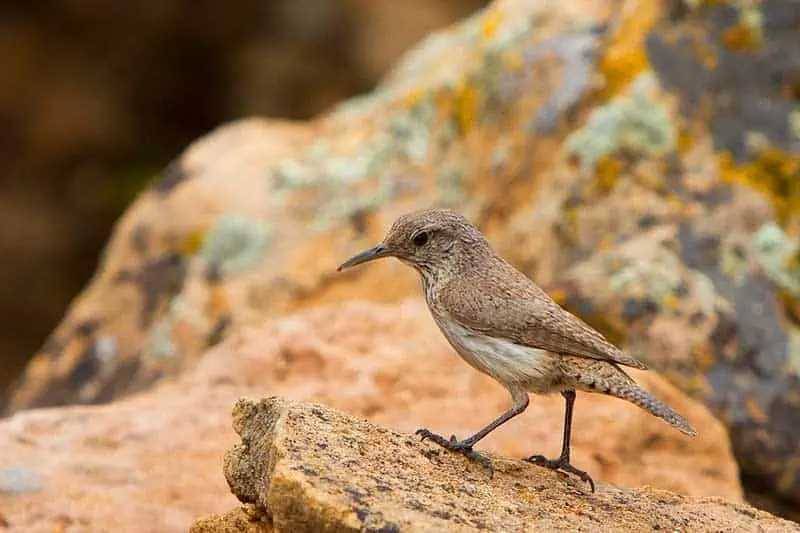
Scientific name:
Rock wrens can be seen hopping around and looking for insects and food in western North America. They have long and thin bills and are a bit larger than house wrens, but smaller than bluebirds.
As their name suggests, they prefer rocky environments with crevices and places for shade.
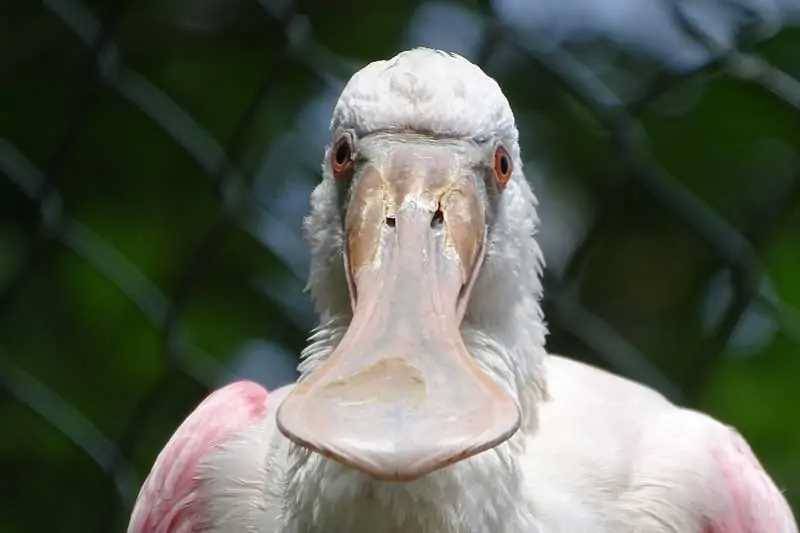
Scientific name:
The Roseate Spoonbill is locally common in coastal Florida, Texas, and southwest Louisiana. They prefer to wander in small flocks and will often associate with other waders. Spoonbills feed in shallow waters and use their wide flat bills to sift the muck by swinging their head from side to side.
This gorgeous bird is uncommon and incredibly vulnerable to degradation of feeding and nesting habitats. They were virtually eliminated from the United States as a side-effect of the destruction of wader colonies by plume hunters in the 1860s, and only recently began to re-colonize Texas and Florida in the 20th century.
Most definitely one of the most unique looking .
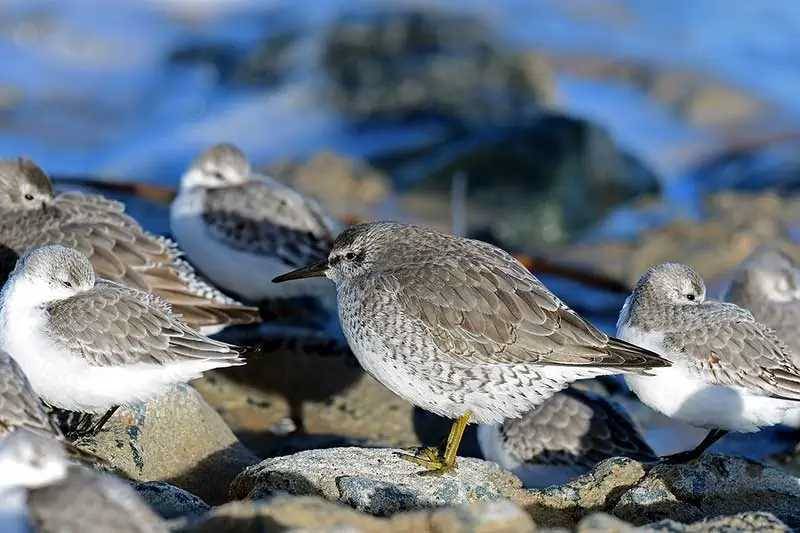
Scientific name:
These small shorebirds are about the size of a robin and winter in parts of the Pacific Northwest, western Canada, and the southern coast of Alaska.
Rock sandpipers have short legs and long bills giving them a stocky look. They stick to the ground most of the time and are fast runners. Breeding adults have pale heads and chestnut markings on their backs and wings. Non-breeding birds are a pale gray.
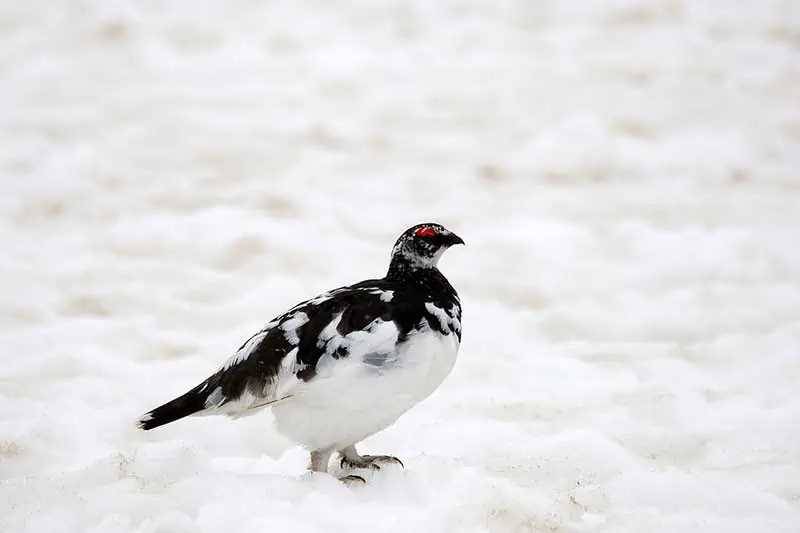
Scientific name:
Rock ptarmigan live in far northern parts of Canada, Alaska, and into Greenland. This hardy bird can survive cold climates and nests in alpine tundra and arctic regions.
The female gets mottled light-brown and black feathers and the breeding male gets mottled brown feathers with a white underbelly. This species is not common in most places populated by humans, so look for them in tundra areas at least 7-10 miles from these areas.
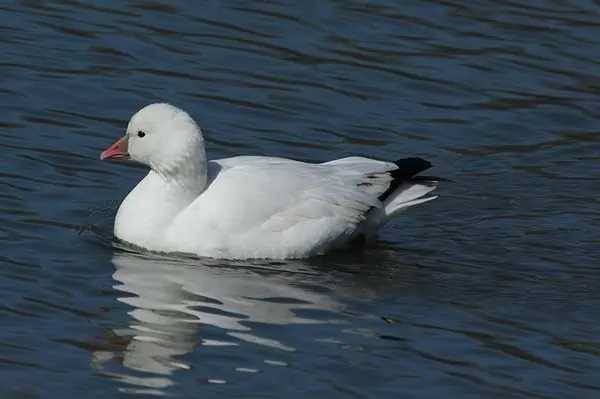
Scientific name:
Ross’s goose is a white goose that winters in a few midwestern states in the U.
This species is slightly smaller than a Canada goose, and the white morph has the appearance of a snow goose. They have black tipped wings and tail feathers.
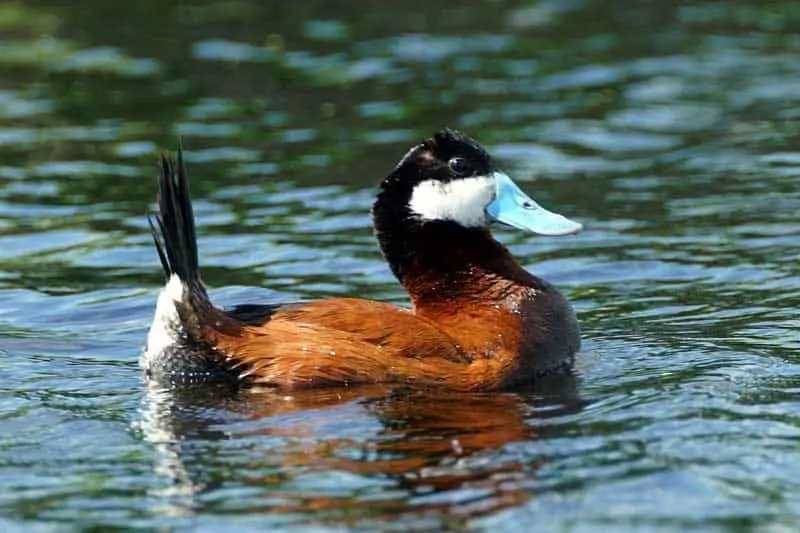
Scientific name:
Ruddy ducks breed in marshy lakes and ponds mainly along the northern edge of Ohio. They prefer to live in dense vegetation in or near wetlands, which can make them hard to spot.
Ruddy ducks appear to be expanding their range in Ohio. They have a fan-shaped tail which often sticks up, and a compact “stocky” looking body. Breeding males have a bright blue beak, chestnut body and white cheek.
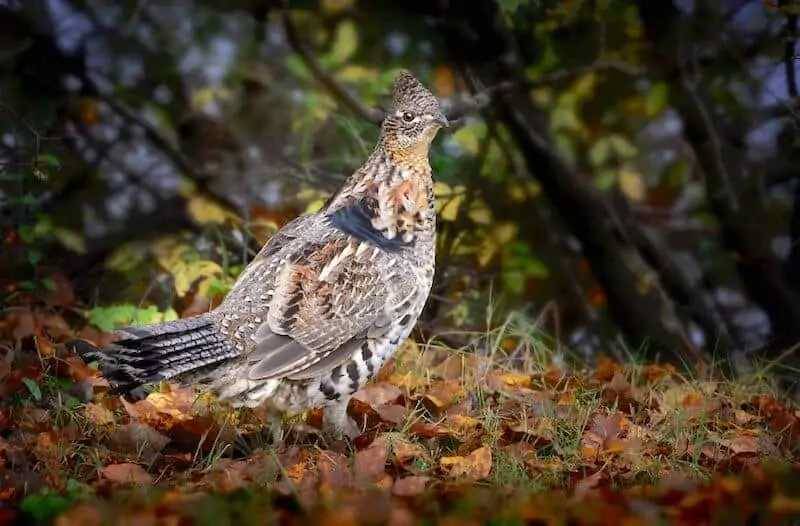
Scientific name:
Even though males are larger than females, the sexes are hard to tell apart. Plumage is a mixture of whites, browns and grays in a variety of different patterns. They have feathered nostrils and their legs are covered in feathers down to the toes. This mixed plumage makes the ruffed grouse perfect and blending into its surroundings, the forest floor.
They typically only fly in short bursts and mainly stick to walking along the ground. There are over ten other species of grouse world wide. Ruffed grouse are the most widely distributed resident game bird in North America.
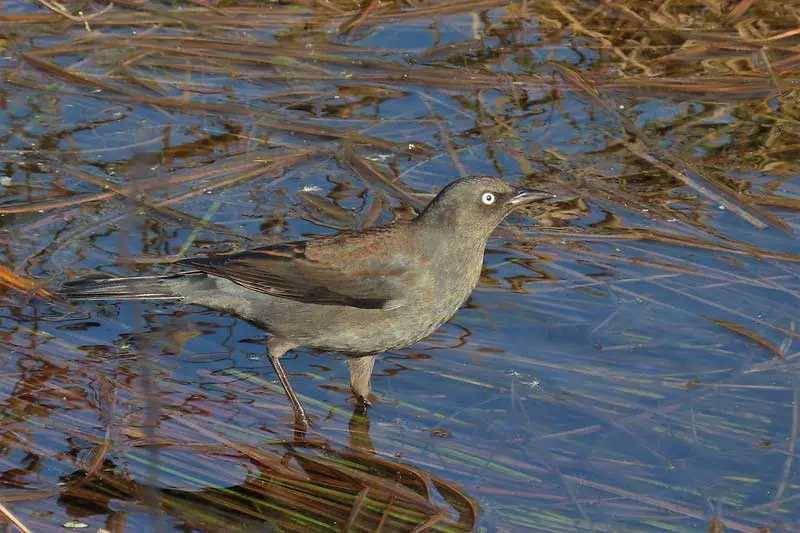
Scientific name:
Rusty blackbirds spend their winters throughout much of the eastern half of the United States, but head north to boreal forests for the breeding season into Canada and Alaska. This bird is one of North America’s most rapidly declining species with 85% or more of the population disappeared in the last 40 years.
Males are glossy black and females are a rusty-brown color. Rusty blackbirds aren’t commonly seen in backyards or at bird feeders and live in a marshes and wetlands for their habitats. They feed mostly on insects and plant matter, but this species has been documented feeding on other birds.
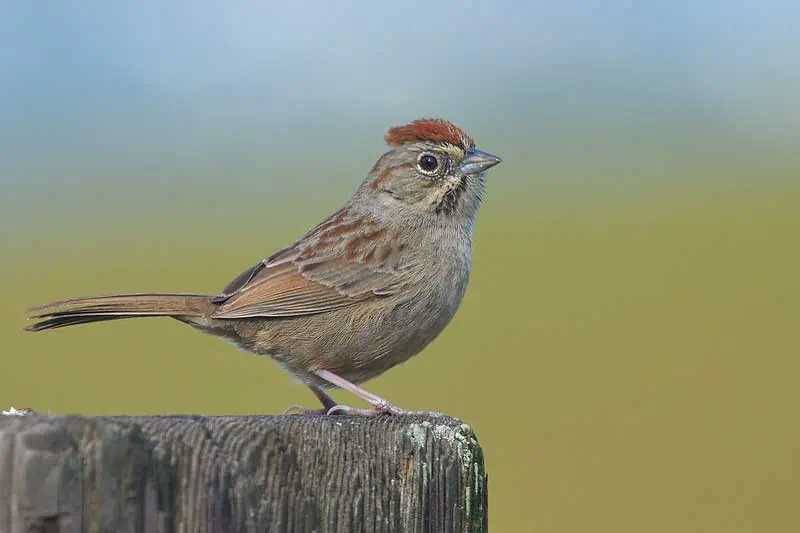
Scientific name:
The rufous-crowned sparrow only lives in Mexico, the southwestern United States, and a couple of isolated areas in midwestern states like Oklahoma and Kansas.
These tiny birds are non-migratory and spend much of their time on the ground foraging for food. Rufous-crowned sparrows build their nests on the ground, under crevices, rocks, or other structures for cover.
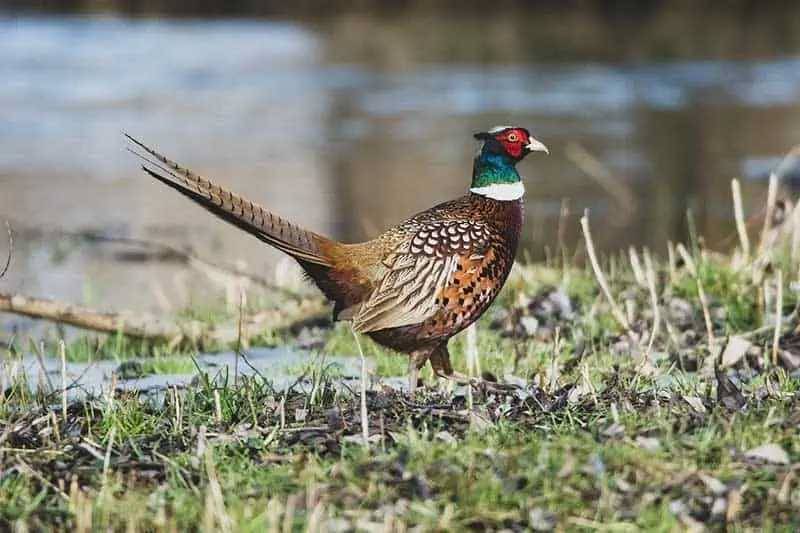
Scientific name:
Look for ring-necked pheasants along roadsides and in open fields in much of northern United States and portions of southern Canada. These ground-nesting birds are a little smaller than turkeys and the males have green heads and a prominent white collar around their necks.
Ring-necked pheasants are grouse that prefer to live in grasslands, fields, swamps, and near wetlands where they have easy access to fruits, nuts, and insects. The males have a booming crow, similar to a rooster’s, that can be heard for more than a mile away.
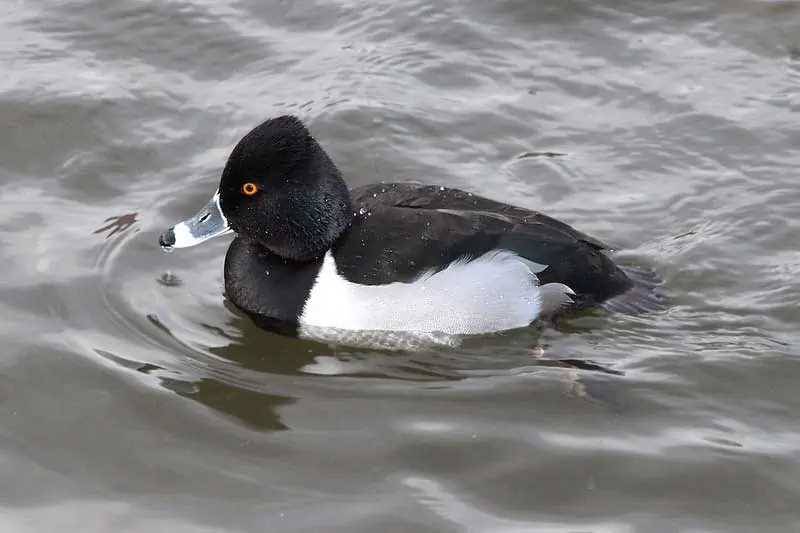
Scientific name:
Ring-necked ducks are common throughout the United States and North America, as well as Cuba and the Caribbean. They breed in Canada and parts of far northern United States. They get their names from a hard to see chestnut colored ring they have around their black feathered necks.
This species can migrate in huge numbers across much of northern and central Untied States as they fly to their Canadian breeding grounds. Flocks of several hundred thousand are known to congregate in some lakes in Minnesota. The males have the glossy black heads and gray sides that you see pictured above.
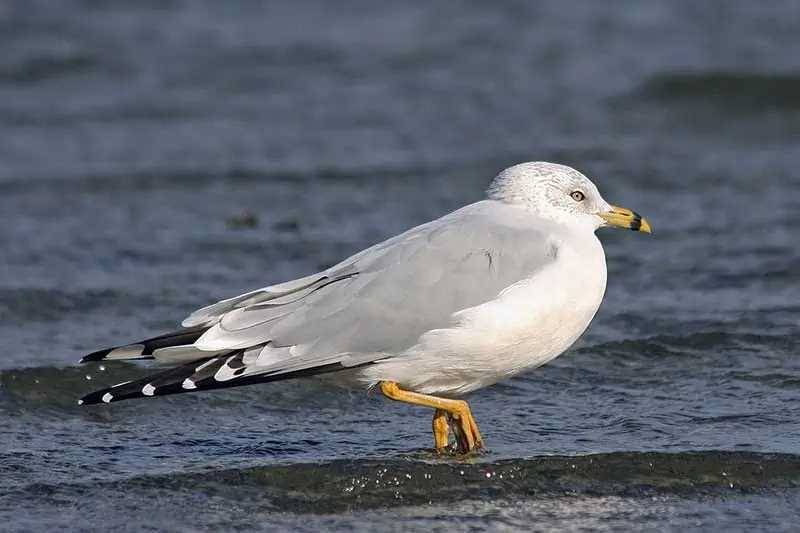
Scientific name:
Most often seen far from coastal areas, the ring-billed gull gets its name from the obvious ring that it has going around its beak. While they do occur on both the east and west coast in the winter, ring-billed gulls breed near freshwater mostly in the interior of the United States and southern Canada.
These gulls are omnivores and often seen foraging in parking lots and through trash. Ring-billed gulls are medium-sized birds, about the size of an American crow. Males and females work together to build their nests on the ground, usually somewhere with cover from aerial predators.